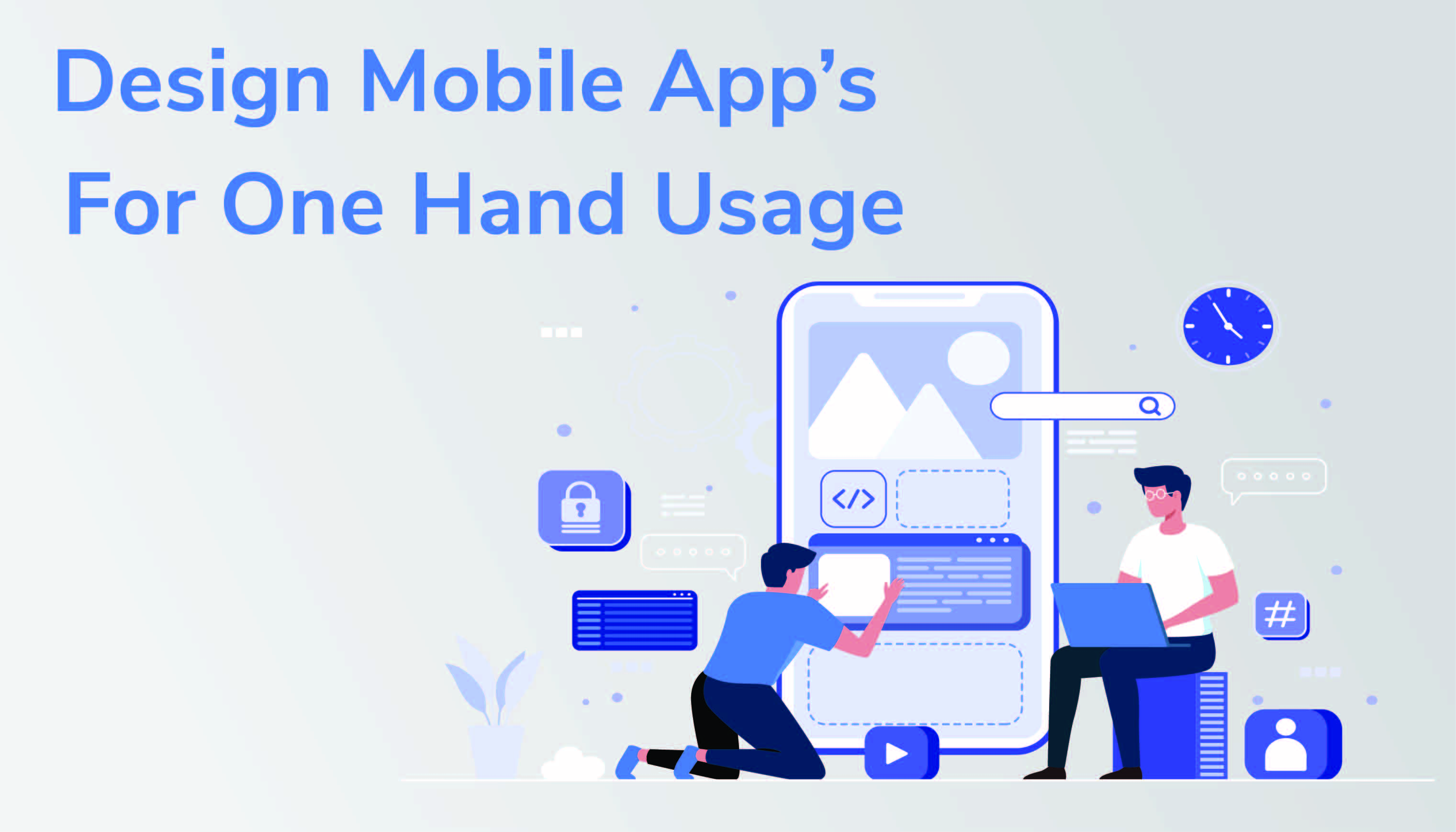“When people start to marry their apps, we will suddenly realize that technology has gone too far.” – Anthony T. Hincks
Sounds too over the top a statement? Well, it is very near the truth, to say the least. Half of the world population is a smart phone population and they spend as much as 90% of their time with their apps. Mobile Apps truly have become an important aspect of people’s everyday life. Is it even any wonder that in today’s date there are about 4.35 millions of mobile apps available on Apple App Store and Google Play Store? In this situation, if you wish to get your own mobile app developed, you need an application which has an interface which is very user friendly and a good navigation. After all why would people choose your app when they are spoilt for choice? This is possible if you consider the ease of the user while using your application. So what do you do? Simple, you get developed a Mobile App Design for One-Hand Usage.
What Are Mobile Apps For One-Hand Usage?
One-hand enabled Mobile Apps allows for the active Mobile app to shrink, so that the user can reach everything with one hand. Wondering why the need of such design? Let us explain.
A 3.5 inches phone can be easily navigated with a single hand. However, most of the mobile phones today are bigger than 5 inches screen. On the other hand, mobile users mostly use their mobile phones when they are on the go, or when they are multi-tasking. Meaning, they tend to use mobiles single-handedly. But, using a large screen mobile with one hand causes some difficulties. Thus, you need a Mobile App Design which is able to address these difficulties and makes using your app easy for your audience. Now the question arises how do you achieve this? Let’s take a look
How To Design Mobile Apps For One-Hand Usage?
-
The Approach:
The main purpose of designing a one-hand usage app is to develop a User Interface and User Design which makes it convenient for the user. So, we are considering users who are using their mobiles and subsequently the app with a single hand. Now you may wonder what then about those who use both their hands? Well an app developed with single handed users in mind, causes no problems if used with both hands. However, apps developed with two-handed users in mind will cause problems for one-hand users. So, in your approach, you need to consider the following factors – Right handed users, Left handed users, and both handed users – and the switch between them.
-
Identifying The Problem:
Once you consider your approach, you need to find out what exactly is the problem that the users face when they use a mobile single-handedly. Let’s assume you are using your mobile with one-hand only, your right hand to be specific. The centre of the screen and the right side of the screen are easy to reach. The bottom of the left side can also be reached. However, it is very much difficult to reach the top portion, especially the top left side. Same goes for the left handed usage. Now, consider your app. What is its function? May be creating post, sharing something, or capturing images? What if these features are placed where they are discovered easily, but are difficult to reach? Such as being placed right at the top, so that it is in focus, but rather difficult to reach with user’s short thumb. Or what if the features are easily reachable, but are out of focus? For example they are right near the user’s thumb i.e. easy to reach, but not visible because of the thumb itself?
-
Design One-handed Pattern:
Your application users should not require to struggle so as to reach an important feature or part of your application. This should be your main aim; because that would be just bad user experience. It may also act as an obstacle in achieving the main purpose of the application. So, what can you do? As a Mobile App Development Company, or someone who develops a mobile application, you may need to retool your frameworks as well as process and add new libraries. Based on the use, you have to design the proper placement of your buttons, controls, icons, etc. Design so as to make editing, sharing, sending, etc. easy too. You should design your UX patterns which follow the rules and is for One-hand usage too.
-
Design Navigation:
The User experience patterns for navigation includes navigations bars, tabs, links, menus, etc. All these important pasts of navigation should be placed upfront so that they are easily reachable. You can make use of fly-out menus. Thus, instead of a full page menu, you can design fly-out menus which can fly-out right from the bottom of the screen. Thus, it’ll allow for easy and reachable navigation. Also remember to design UX patterns which allows for easy jumping from one section to another. Going back as well as closing screen, etc. also should be thus made easy.
Conclusion:
With the evolution in Mobile App development process, newer techniques, tools, etc. are being introduced. The Mobile App Design which was developed previously is continuously being challenged, and improved. The main aim of development has always been and will always be convenience and comfort of the user. For a business looking forward to create business and a brand identity through Mobile applications, a One-Hand Usage Mobile Application will ensure great user experience. On the other hand, for a Mobile App Development Company, developing a One-Hand Usage Mobile Application will be a challenge, an adaptation, an update in their skills.

















Post Comments